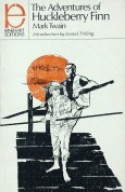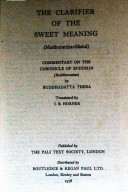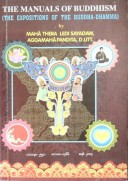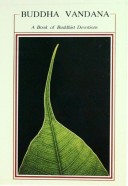MCB: 1210000005867
INTRODUCTION
In 1876 Mark Twain published The Adventures of Tom Sawyer and in the same year he began vvhat he called “another boys’ book.” He set little store by the new venture and said that he had undertaken it “more to be at work than anything else.” His heart was not in it—“I like it only tolerably well as far as I have got,” he said, “and may possibly pigeonhole or burn the MS when it is done.” He pigeonholed it long before it was done and for as much as four years. In 1880 he took it out and carried it forward a little, only to abandon it again. He had a theory of unconscious composition and believed that a book must write itself; the book which he referred to as “Huck Finn’s Autobiography” refused to do the job of its own creation and he would not coerce it.
But then in the summer of 1881 Mark Twain was possessed by a charge of literary energy which, as he wrote to a friend, was more intense than any he had experienced for many years. He worked all day and every day, and periodically he so fatigued himself that he had to recruit his strength by a day or two of smoking and reading in bed. It is impossible not to suppose that this great creative drive was connected with—was perhaps the direct result of—the visit to the Mississippi he had made earlier in the year, the trip which forms the matter of the second part of Life on the Mississippi. His boyhood and youth on the river he so profoundly loved had been at once the happiest and most significant part of Mark Twain’s life; his return to it in middle age stirred vital memories which revived and refreshed the idea of Huckleberry Finn. Now at last the book was not only ready but eager to write itself. But it was not to receive much conscious help from its author. He was always full of second-rate literary schemes and now, in the early weeks of the summer, with Huckleberry Finn waiting to complete itself, he turned his hot energy upon several of these sorry projects, the completion of which gave him as.
EXPLANATORY
In this book a number of dialects are used, to wit: the Missouri negro dialect; the extremist form of the backwoods Southwestern dialect; the ordinary “Pike County” dialect; and four modified varieties of this last. The shadings have not been done in a haphazard fashion, or by guesswork; but painstakingly, and with the trustworthy guidance and support of personal familiarity with these several forms of speech.
I make this explanation for the reason that without it many readers would suppose that all these characters were trying to talk alike and not succeeding.
The Author
CONTENTS
Notice……………………………………….. xix
Explanatory……………………………….. xx
- I Discover Moses and the Bulrushers…………… 1
- Our Gang’s Dark Oath……………………………… 4
- We Ambuscade the A-rabs…………………………. 10
- The Hair-ball Oracle………………………………… 15
- Pap Starts in on a New Life……………………….. 18
- Pap Struggles with the Death Angel……………. 23
- I Fool Pap and Get Away………………………….. 3°
- I Spare Miss Watson’s Jim…………………………. 36
- The House of Death Floats By…………………….47
- What Comes of Handlin’ Snake-skin………….. 51
- They’re After Us!……………………………………. 55
- “Better Let Blame Well Alone”…………………. 63
- Honest Loot from the “Walter Scott”………….70
- Was Solomon Wise?……………………………….. 76
- Fooling Poor Old Jim…………………………….. 80
- The Rattlesnake-skin Does Its Work…………….86
- The Grangerfords Take Me In…………………… 95
- Why Harney Rode Away for His Hat………….. 104
- The Duke and the Dauphin Come Aboard….. 117
- What Royalty Did to Parkville…………………… 125
- An Arkansaw Difficulty……………………………. 134
- Why the Lynching Bee Failed…………………… 145
- The Orneriness of Kings………………………….. 150
- The King Turns Parson…………………………… 156
- All Full of Tears and Flapdoodle……………… 163
- I Steal the Kings Plunder…………………………. 170
- Dead Peter Has His Gold………………………… 179
- Overreaching Don’t Pay………………………….. 186
- I Light Out in the Storm…………………………… 196
- The Gold Saves the Thieves……………………….206
- You Can’t Pray a Lie……………………………… 209
- I Have a New Name………………………………… 219
- The Pitiful Ending of Royalty……………………..225
- We Cheer up Jim……………………………………. 232
- Dark, Deep-laid Plans…………………………….. 238
- Trying to Help Jim………………………………….. 246
- Jim Gets His Witch-pie…………………………….. 251
- “Here a Captive Heart Busted”………………… 258
- Tom Writes Nonnamous Letters………………… 265
- A Mixed-up and splendid Rescue………………. 270
- “Must V Been Sperits”……………………………. 276
- Why They Didn’t Hang Jim……………………… 283
Chapter the Last. Nothing More to Write…………. 292
 Facebook
Facebook
 Google
Google
 Google+
Google+


















